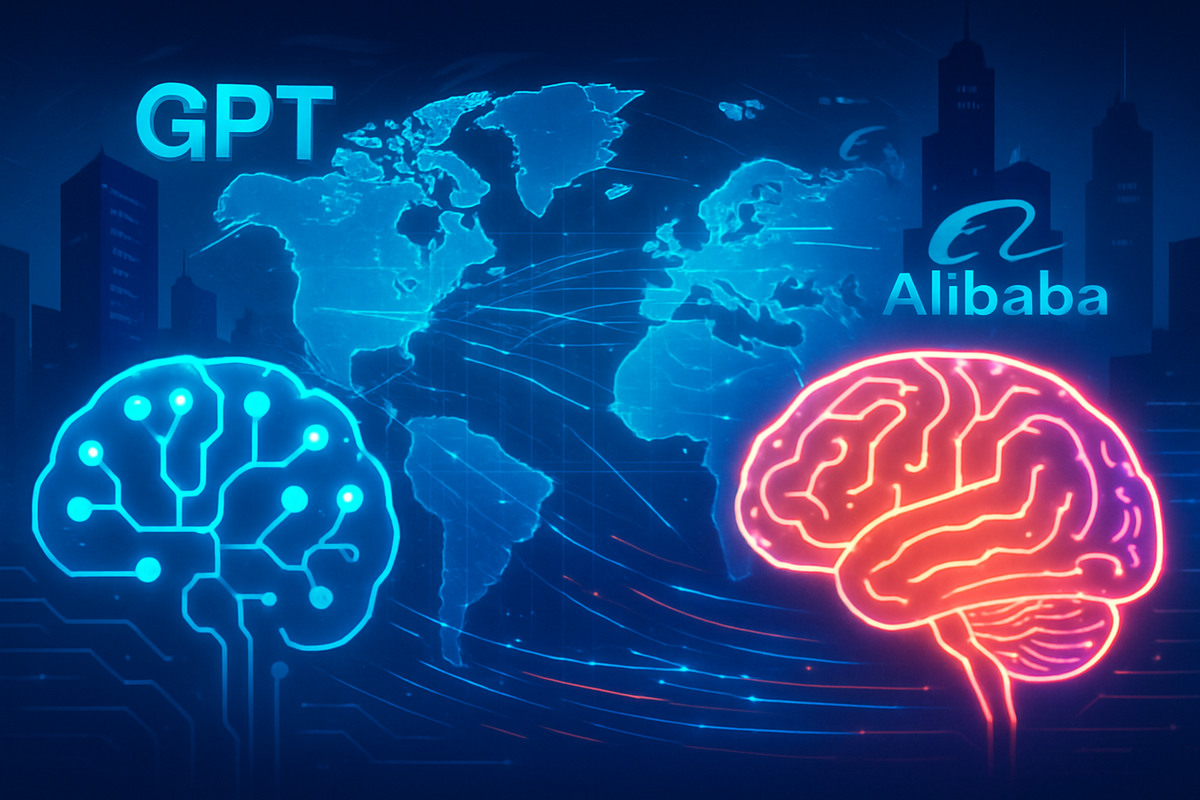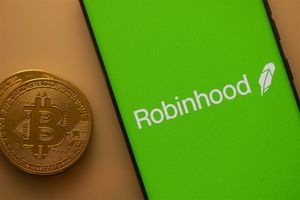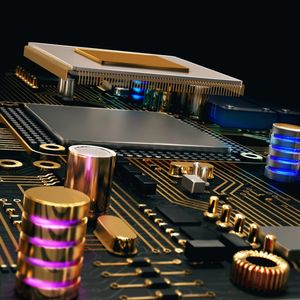
The artificial intelligence landscape is once again at a pivotal juncture with the highly anticipated arrival of OpenAI's GPT-5. This new iteration is poised to redefine the benchmarks for large language models, bringing with it rumored advancements that could significantly alter the competitive dynamics of the global AI race. Its release immediately casts a spotlight on prominent contenders like Alibaba's (NYSE: BABA) Qwen series, a formidable player known for its robust open-source models and impressive multimodal capabilities.
The implications of GPT-5's debut extend far beyond mere technological one-upmanship. It represents a critical moment for the industry, challenging existing paradigms and forcing a re-evaluation of strategies for developers, enterprises, and even national AI initiatives. The direct comparison with Qwen, a series that has garnered significant traction for its multilingual prowess and efficient architecture, highlights the diverse approaches and strengths emerging from different corners of the world in the relentless pursuit of artificial general intelligence.
The Dawn of a New Era: GPT-5's Unveiling and Its Ramifications
The unveiling of GPT-5 marks a significant milestone in the rapid evolution of artificial intelligence. While OpenAI has remained tight-lipped about specific details, industry whispers and leaked information suggest a leap forward in several critical areas. Foremost among these are "unified intelligence," implying a more cohesive and integrated understanding across various data types and tasks, and "persistent memory," which would allow the model to retain context and learn from past interactions over extended periods, moving beyond the limitations of current session-based memory. Perhaps the most transformative rumored feature is "autonomous agent functionalities," enabling GPT-5 to perform complex, multi-step tasks independently, potentially revolutionizing automation and human-computer interaction.
This advancement comes after a rapid succession of foundational model releases, from GPT-3's initial impact to GPT-4's enhanced reasoning and multimodal capabilities. The timeline of AI development has been accelerating, with major players like Google (NASDAQ: GOOGL) with its Gemini series, Meta (NASDAQ: META) with Llama, and Anthropic with Claude, constantly pushing the boundaries. Alibaba's Qwen series, including models like Qwen-VL and Qwen-Audio, has carved out a significant niche, particularly excelling in multilingual contexts, advanced coding, and mathematical reasoning. Its efficient Mixture-of-Experts (MoE) architecture has also been lauded for enabling powerful performance with reduced computational overhead, making it an attractive option for developers seeking open-source flexibility. The initial market reaction to GPT-5's arrival is one of cautious optimism mixed with intense speculation, as companies and developers scramble to understand its full capabilities and how they might integrate or compete with existing AI infrastructure.
Shifting Sands: Identifying the Winners and Losers in the AI Arms Race
The arrival of GPT-5 is set to redraw the lines of competition, creating clear winners and posing significant challenges for others. OpenAI, backed by Microsoft (NASDAQ: MSFT) through its Azure cloud platform, stands to be a primary beneficiary. GPT-5's rumored capabilities could solidify OpenAI's position as the leading innovator in the field, attracting more developers, enterprise clients, and research partnerships. Microsoft, in turn, would see its Azure cloud services become an even more indispensable hub for cutting-edge AI development and deployment, further entrenching its market share in the cloud computing space against rivals like Amazon (NASDAQ: AMZN) Web Services (AWS) and Google Cloud.
For Alibaba's Qwen series and other open-source models, the landscape becomes more complex. While Qwen's strengths in multilingualism, coding, and its efficient MoE architecture remain highly valuable, GPT-5's potential for unified intelligence and autonomous agents could set a new bar for general-purpose AI. Open-source models might face increased pressure to innovate rapidly, potentially focusing on niche applications, specialized domains, or offering more cost-effective and customizable solutions. Companies heavily invested in specific open-source ecosystems might need to diversify their AI strategies or find ways to integrate with or leverage the advancements of proprietary models like GPT-5. Conversely, the increased competition could spur further innovation across the board, benefiting the broader AI ecosystem as models become more powerful and accessible. Developers and startups that can quickly adapt to and build upon these new foundational models, regardless of their origin, are also poised to win, creating novel applications and services.
Industry Reshaping: Broader Implications and Regulatory Scrutiny
GPT-5's emergence fits squarely into the broader industry trend towards more capable, multimodal, and agentic AI systems. This shift signifies a move beyond mere content generation to AI that can understand, reason, and act autonomously across diverse domains. The potential ripple effects are vast: industries from healthcare and finance to manufacturing and creative arts could see unprecedented levels of automation and intelligent assistance. Competitors will be forced to accelerate their own research and development, potentially leading to a new wave of mergers, acquisitions, and strategic partnerships as companies vie for talent and technological advantage.
The release also intensifies the ongoing debate around AI regulation and policy. Concerns about AI safety, ethical deployment, potential job displacement, and the concentration of power in the hands of a few AI giants will undoubtedly escalate. Governments worldwide, already grappling with frameworks for AI governance, will face renewed pressure to establish clear guidelines for development, transparency, and accountability. Historically, major technological shifts, such as the advent of the internet or mobile computing, have always been followed by periods of intense regulatory scrutiny and market restructuring. GPT-5's capabilities, particularly in autonomous agency, evoke comparisons to these transformative moments, suggesting that the industry is entering a phase where its societal impact will necessitate more robust oversight and international cooperation to ensure responsible development and deployment.
The Road Ahead: Navigating the Next Frontier of AI
The immediate aftermath of GPT-5's release will likely see a flurry of benchmarks, evaluations, and practical applications emerging as developers and researchers put the model through its paces. In the short term, companies will be assessing how GPT-5's capabilities can be integrated into their existing products and workflows, or if entirely new business models become viable. This could lead to strategic pivots, with some enterprises doubling down on proprietary AI solutions, while others might explore hybrid approaches combining the best of both proprietary and open-source models.
Long-term possibilities are even more profound. The advancements in persistent memory and autonomous agents could pave the way for truly personalized AI assistants, self-improving software systems, and highly sophisticated research tools. Market opportunities will emerge in areas like AI-powered automation platforms, advanced data analysis, and hyper-personalized content creation. However, challenges will also intensify, including the immense computational resources required to train and run such models, the ongoing need for robust ethical guidelines, and the societal implications of increasingly autonomous AI. Potential scenarios range from a rapid acceleration towards artificial general intelligence (AGI) to a more fragmented AI landscape where specialized models dominate specific niches. Investors should closely watch for companies that demonstrate agility in adopting new AI paradigms, those that build robust infrastructure to support advanced AI, and those that can effectively navigate the evolving regulatory environment.
Conclusion: A New Chapter in the AI Saga
The arrival of GPT-5 marks a significant new chapter in the ongoing saga of artificial intelligence. It underscores the relentless pace of innovation and the increasingly competitive nature of the global AI race. While Alibaba's Qwen series and other open-source models have demonstrated remarkable capabilities and continue to play a vital role, GPT-5's rumored advancements in unified intelligence, persistent memory, and autonomous agency set a new, ambitious benchmark.
The market moving forward will be characterized by intensified competition, rapid technological diffusion, and a heightened focus on ethical AI development. The key takeaway is that no single model or company will likely dominate every aspect of the AI landscape; rather, a diverse ecosystem of specialized and general-purpose models, both proprietary and open-source, will continue to evolve. For investors, the coming months will be crucial for identifying companies that can effectively leverage these powerful new tools, adapt to shifting market dynamics, and contribute to the responsible and beneficial deployment of AI for society. The true impact of GPT-5 will unfold not just in its technical prowess, but in how it reshapes industries, influences policy, and ultimately, transforms our interaction with technology.





